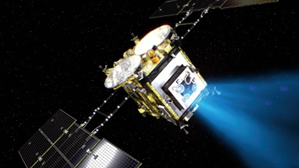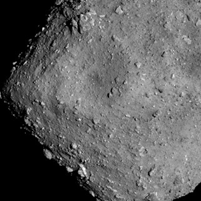ACTIVITY What We Are Working On
Hayabusa2
Hayabusa2 is a sample-return mission to asteroid Ryugu. The mission investigated in the proximity of asteroid Ryugu from June 2018 until November 2019. In December 2020, the spacecraft successfully brought the samples back to Earth. After the sample capsule release, the spacecraft is now on its way to the next target object as an extended mission.

At JLPEDA, we are developing various types of software and also providing other support as follows. We are also conducting scientific research on Ryugu as members of the Hayabusa2 science team.
Image search system development
We are developing a web-based search system that enables researchers to locate images suited to their purposes from among large volumes of scientific observation images taken by optical navigation cameras (ONCs) .

Developing a false coloration tool for images
We are developing a tool that combines images from multiple ONC bands to generate false coloration images for browsing. These false coloration images are useful for researchers to understand the characteristics of the data before analyzing it in detail.
Creating virtual Ryugu models for operation trainings
For landing spot selection practice conducted before arrival at Ryugu, we created a 3D simulated asteroid called Ryugoid and performed a simulation of observation data (Miura et al., 2017). This simulation was able to emulate visible and infrared light through various filters, which is not possible with normal CG models. As another type of practice, we also repeatedly simulated descending close to the surface of the asteroid conducting real-time integrated operations. In addition, we have created navigation image simulation software for this training.
- - ISAS website: The Forefront of Space Science; Data & Reality in Space Science
- - The soon-to-arrive Hayabusa2: 1st time prologue/simulating operations in the vicinity of Ryugu - RIO Training


